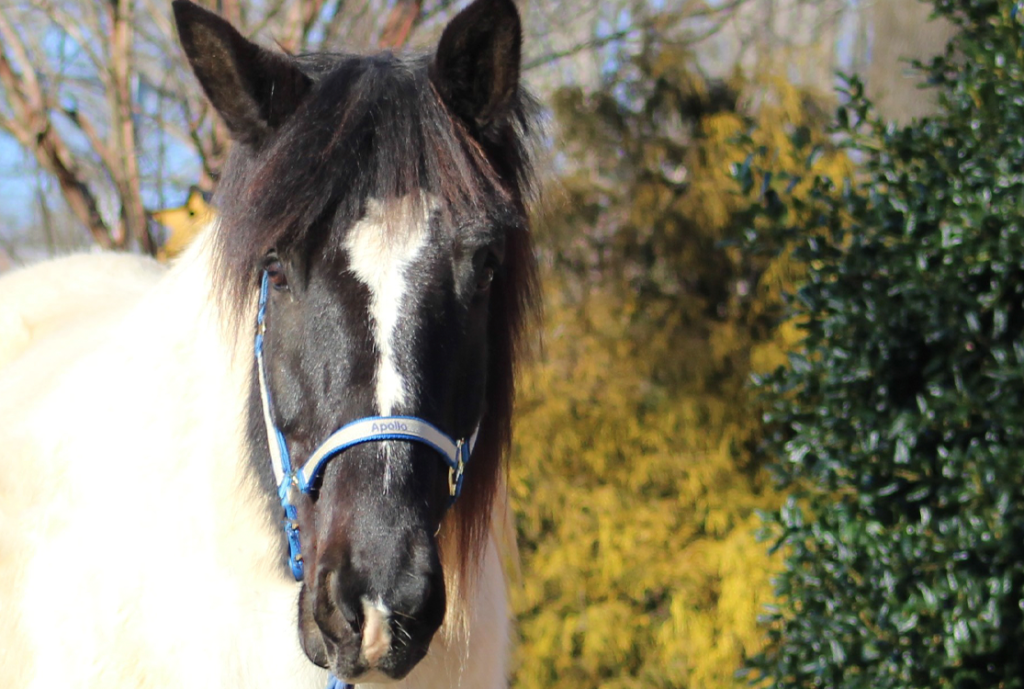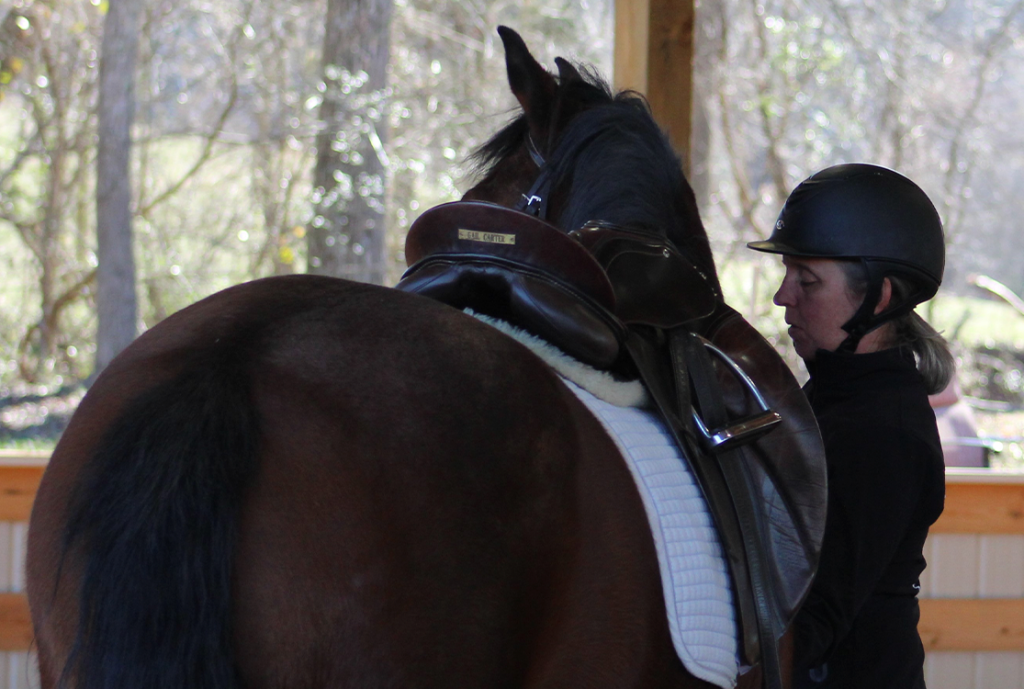A frequent part of my job is helping anxious horses achieve a more relaxed, calm emotional and mental state. In other words, finding ways to turn on the parasympathetic nervous system and tone down the sympathetic nervous system. This is a complex process and there is no “quick fix” for consistently shifting a horse into a more relaxed state. If there is a magic button that can be pushed to instantly calm a horse I am not aware of it so that’s not what I will be sharing with you here. However, with an intention to help your horse stay calm and connected, and time dedicated to developing the necessary tools, this process becomes easier and more accessible even in the most anxiety-producing circumstances.
If we want to be a calming influence for our horses, we have to first maintain our own sense of safety and ability to be aware and responsive in the moment. We must be able to display calming signals to the horse in order to be a positive influence. Keeping ourselves safe begins with setting clear and consistent boundaries. Horses will assess right away if a person can be pushed or pulled, so showing them that you are a solid and grounded presence is essential. I do this by maintaining a clear personal space, or “bubble,” using a wand (dressage whip or flag) if necessary to ensure I don’t get run over. I don’t try to control the horse, though if they are on the end of a lead rope I make sure that they don’t drag me around. Sometimes a strong, grounded warrior pose comes in handy with a horse that pulls. At this stage it is important that I have enough length in the lead line, it is impossible to create space when holding a short grip on the rope.
When boundaries are established I begin the process of “moving into stillness.” Rather than using restraints to insist the horse stay in one place, I allow the horse to move as often as needed, yet I am using the movement to redirect the horse’s attention back towards me. To do this, I move away from the direction the horse is going in, inviting them to “follow me.” The halter and lead rope can be added to create sensation that brings attention to my movement, not to pull the horse but to reinforce what my body language is communicating. When the horse is redirected towards me and I have their attention I will stop, inviting them to stop with me. Sometimes they do and sometimes they don’t, but I don’t force it, I just keep redirecting and inviting until I have their attention and they stop with me. (If the horse cannot do this it might be best to take off the lead line, going back to the roundpen or paddock to start the relationship without pressure from the halter and lead rope, and continuing when they are ready rather than using uncomfortable pressure to create restraint).
When the horse will stand with me, I can begin using touch to help them let go of tension and find a more relaxed state. Sometimes touching the horse is too much sensation, and I will simply stand quietly and breathe with them instead. When they are relaxed enough to put my hands on, I will follow their direction as to what places in the body they are comfortable with me touching, avoiding areas that they are uncomfortable with, though usually I can get back to those places later when they are more relaxed. The type of touch varies depending on the situation, there are endless possibilities, but in almost all cases I begin with just laying my hand on, literally doing nothing more, waiting patiently for the horse to release tension they might be holding. In this way I act as a sort of grounding rod for the horse, using my own energy to create a sense of calm and stillness. I am not going to go into the many ways that we can use touch to help a horse relax, there are many options, and I encourage everyone who has a horse to investigate these to create a stronger connection and relationship.
Bringing the horse’s head down is another important piece of the relaxation process that makes a huge difference both on the ground and when riding. While it might be scientifically controversial, my own experience and observation has shown me that changing posture can create a shift in the nervous system. It’s as if the horse’s brain is getting a message from the body that the head is down, so we must be safe, which creates a shift to the parasympathetic. This is a powerful tool that can be challenging in the beginning but gets easier with practice.
There are different ways to get the horse to lower the head. Regardless of the technique, it is important that the head is not forced down, as this does nothing to create a relaxation response. Instead, the movement should be a response to a gentle request. I usually begin with one hand behind the poll and one on the nose. Rather than using a direct downward pressure to get a release, I ask for small movements of the first two cervical joints, which creates a release and a downwards movement. This is a very gentle process and the movements are very small. Any time the horse gives a response I release the pressure in acknowledgement. It is important to not be greedy here, waiting for a particular desired response before releasing can cause tension and bracing. It is an incremental process and for some horses letting go of their vigilant state and lowering the head can be VERY difficult! Using treats to positively reinforce downwards movement can help speed the process along. Eventually I want to be able to use a downward ask with the halter to lower the head. As this gets easier, we can do the head down position at the walk.
In her Balance Through Movement method, Celeste-Leilani Lazerus describes what she calls Pillar One, which is basically maintaining a head down position for an extended time both at the halt and walk, specifically a position in which the brachiocephalicus muscle is turned off, resulting in a loose underside of the neck. With my particularly hot ex-barrel racer Crow, incorporating Pillar One has been incredibly helpful to keep him in a more relaxed posture. Doing this on the ground, first with the halter and then with the bridle, prepares the horse to follow the rein contact forward and downward when ridden.
My former teacher and brilliant horseman Mark Russell, who sadly passed away several years ago, was a wonderful teacher of how to get a soft, light response to a touch of the rein. He would pick up a rein lightly, watch and feel for the smallest response from the horse, then release the contact, giving as much rein as needed to encourage the horse to stretch forward and down. This paves the way so that we can get on our horses and ask them to follow the contact forwards and down, putting them into a posture of relaxation from the saddle. Both Celeste and Mark draw on this principle to prepare horses for riding in a way that turns off the muscle contractions associated with the sympathetic nervous system, creating a calm, connected emotional and mental state and allowing the horse to carry the rider in a more optimal carriage.
Just as we can use “follow me” on the ground to redirect the horse’s attention when they are distracted, we can use the rein contact to redirect the horse’s attention from the saddle. In this way, contact becomes a means to maintain responsiveness to the cues from our body. To go into how we use our movements and position to communicate to the horse would make this blog incredibly long, but I will simply say that the horses understand and respond to what we are doing in our core much more clearly than if we are using pressure from the reins and legs. Ideally the contact does not change whether we are asking the horse to go forward or to slow down, there is never a pulling back pressure, just the same ask/feel/release that began on the ground. When we can maintain this quality of contact and clearly communicate our requests through body movements, we avoid creating tension in the neck and back, which activates the sympathetic nervous system and amplifies anxiety.
Keeping our horses calm in all situations can be a challenging task. The first step is always to maintain our own safety and calm mental/emotional state. As we develop our ability to shift the horses into a more relaxed state we improve our confidence that we can, in fact, stay in control of a situation, which supports our ability to stay mentally clear and focused on the task at hand. Beginning this process in a place of safety is very helpful, gradually increasing the challenge when we have established a baseline of proficiency. With practice however, you will have the ability to keep your horse cool and connected despite the external circumstances, taking your “bubble” of safety along wherever you go.
Follow Us
To learn more about how you can help your horse feel better and improve your relationship through touch, groundwork and riding…
More from my Blog
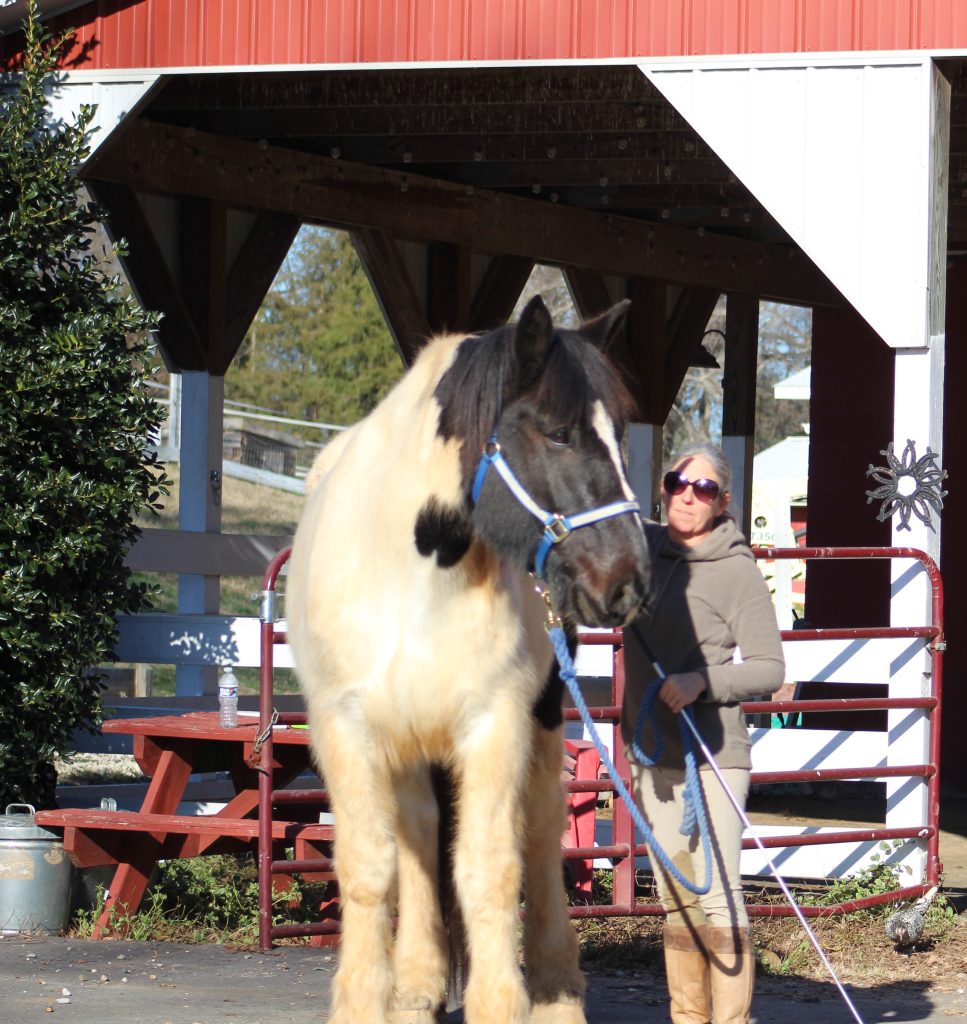
Grounding, Warrior Pose, Root Chakra and Horsemanship
One way horses explore their world is to test whether or not they can move things. If you want to see this in action, put a few objects on…
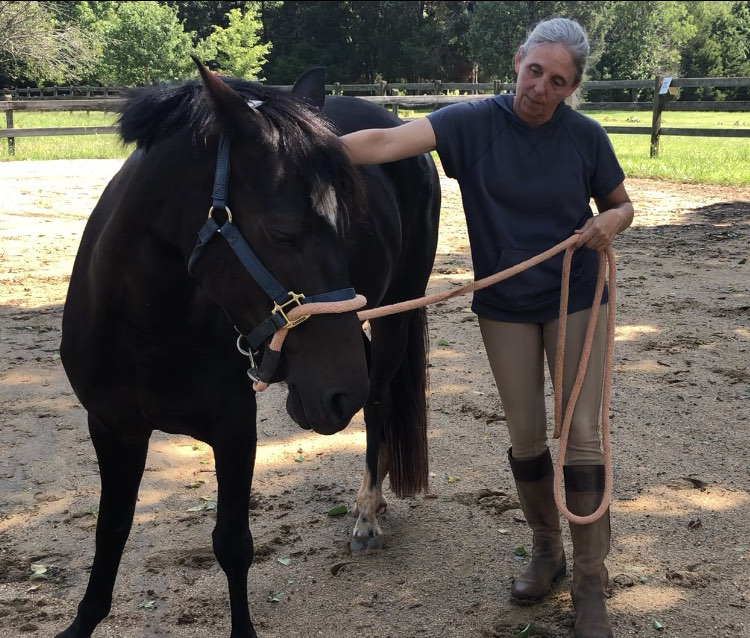
Working with the Nervous System
My work with horses has led me to take a deep dive into the inner workings of the nervous system. As a trainer, often my job is to help a…

Riding with Precision
As riders, we often hear the advice to “use more leg.” In my experience, this often leads to riders that are squeezing and kicking, and horses that are desensitized to…
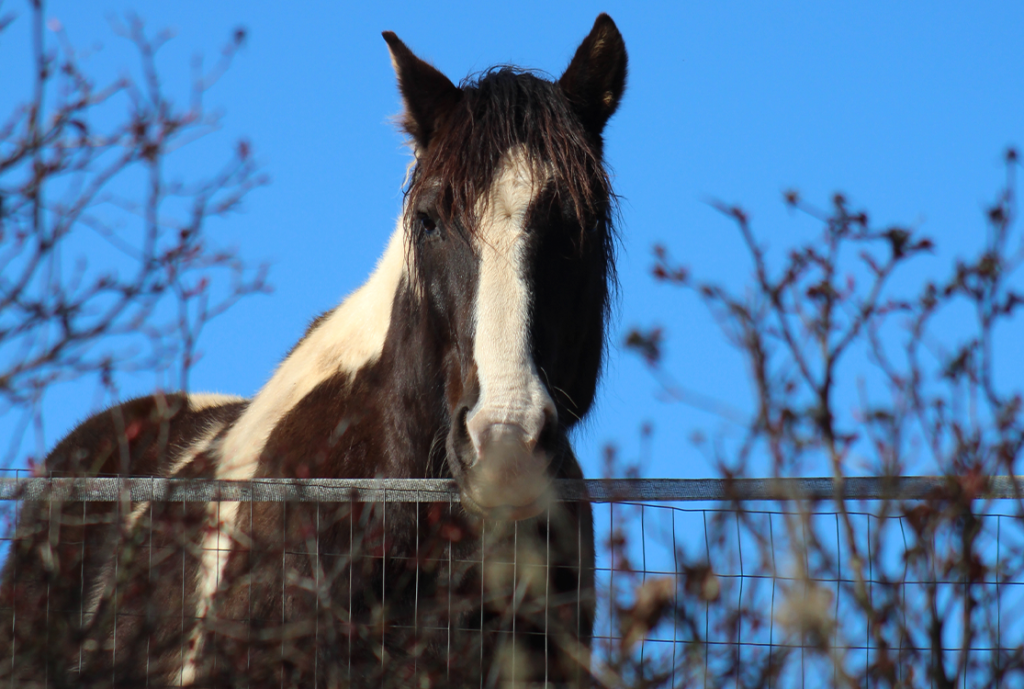
The Transformative Power of Listening
When I am teaching I never know exactly what is going to strike a chord, but I love it when something I say has a transformative impact. In a recent lesson…
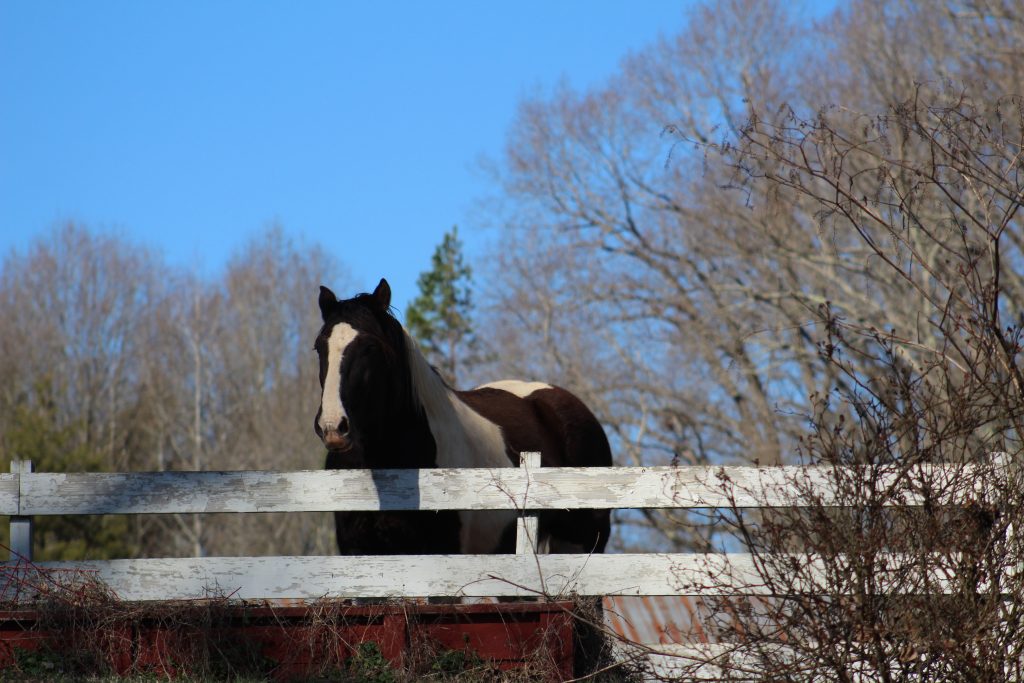
Teaching Weight Bearing Posture
I was talking with a dog trainer friend the other day and we were comparing the many similarities between our jobs, including that our primary role is not so much…
